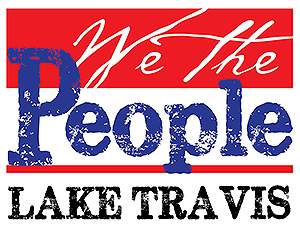The recent tragic event in the NYC subway, involving a former Marine fatally choking a man,
has ignited a fierce debate on crime prevention and public safety. This incident presents an
opportunity to examine the differing perspectives of constitutional republicanism and
constitutional socialism. This article will explore the possibility of a balanced approach that
respects the principles enshrined in the Constitution. In this analysis, we will consider the
importance of individual rights and liberties, the role of law enforcement, and the need for social
and economic reforms in addressing the root causes of crime and violence. By understanding
these diverse viewpoints and seeking common ground, we can work towards creating a
comprehensive solution that upholds the values of our Constitution while fostering a safer, more
equitable society for all.
Conservative, Constitutionalist View: The tragic incident involving a former Marine choking a
man to death in the NYC subway highlights the need for increased personal responsibility and
better law enforcement in our cities. While the Marine’s actions may have been extreme, it
highlights the importance of the Second Amendment and citizens’ right to defend themselves
when threatened.
It’s crucial to uphold individual rights and liberties, and it’s equally important that law
enforcement has the resources to maintain public safety. In this case, the former Marine took
matters into his own hands due to insufficient police presence. Increasing funding for law
enforcement and enabling them to work more effectively in our communities will prevent
incidents like this from occurring in the future.
Constitutional Socialist View: The fatal choking incident on the NYC subway is a tragic and
unfortunate event highlighting the need for comprehensive social and economic reforms to
address the root causes of crime and violence. This story demonstrates the consequences of an
unequal society, where access to mental health care, education, and economic opportunities are
limited.
A constitutional socialist approach would prioritize addressing these systemic issues through
policies that promote social and economic equality. By providing adequate mental health care,
education, and job opportunities, we can reduce the risk of violent incidents like this occurring in
the first place. It’s important to note that increasing police presence and funding will not address
the root causes of crime and violence; instead, we must work towards creating a more equitable
society for all.
Bullet points of the two different views
Conservative, Constitutional Republic View:
- Emphasizes personal responsibility and individual rights, including the right to self-
defense under the Second Amendment. - Stresses the importance of adequate law enforcement presence and resources to maintain
public safety. - Believes that increased funding for law enforcement and more effective policing will help
prevent incidents like this from happening in the future.
Constitutional Socialist View: - Focuses on addressing the systemic issues contributing to crime and violence, such as
inequality in access to mental health care, education, and economic opportunities. - Advocates for comprehensive social and economic reforms to create a more equitable
society. - Argues that increased police presence and funding will not solve the root causes of crime
and violence. Efforts directed toward promoting social and economic equality would
help.
A Balanced Viewpoint:
- Recognize the importance of individual rights and liberties, including the right to self-
defense, while addressing the systemic issues contributing to crime and violence. This
approach acknowledges the need for personal responsibility and the role of law
enforcement in maintaining public safety.
- Advocate for targeted investment in law enforcement, focusing on community policing
and building trust between officers and the communities they serve. This approach
ensures that law enforcement has the necessary resources to protect citizens while
promoting cooperation and collaboration with the community. - Prioritize comprehensive social and economic reforms to address inequality in access to
mental health care, education, and economic opportunities. Investing in these areas can
tackle the root causes of crime and violence, leading to a safer and more equitable society
for all. - Encourage collaboration between law enforcement, social service providers, and
community organizations to create a holistic approach to public safety. This approach
promotes the idea that public safety is a shared responsibility and that addressing the root
causes of crime and violence requires a collective effort from all stakeholders. - Support policies that balance upholding individual rights and promoting social and
economic equality. This approach fosters an environment where citizens can exercise
their rights while benefiting from a society committed to addressing the underlying issues
contributing to crime and violence.
In conclusion, the tragic incident on the NYC subway highlights the need for a balanced
approach to public safety and crime prevention, rooted in the principles of the Constitution. By
upholding individual rights, such as the right to self-defense, while simultaneously addressing
the systemic issues that contribute to crime and violence, we can create a safer and more
equitable society for all.
This balanced approach calls for targeted investments in law enforcement, emphasizing
community policing and building trust with citizens. Furthermore, comprehensive social and
economic reforms aimed at access to mental health care, education, and economic opportunities
must be prioritized. Lastly, fostering collaboration between law enforcement, social service
providers, and community organizations will create a holistic approach to public safety that
acknowledges the shared responsibility of all stakeholders.
By adhering to the constitutional principles that have shaped our nation, we can balance
individual rights and the collective good, ultimately working towards a safer, more just society
for all citizens.
